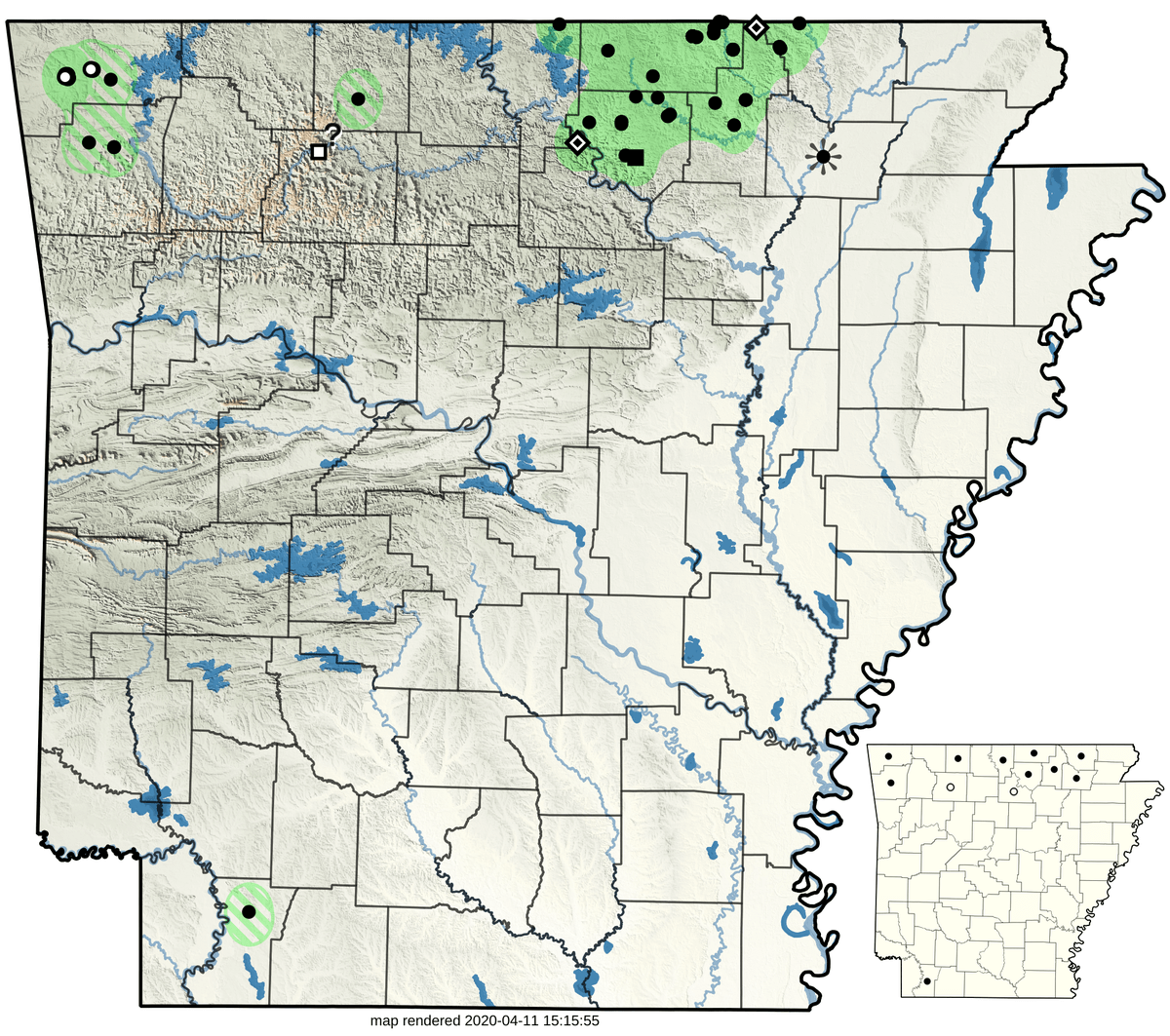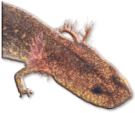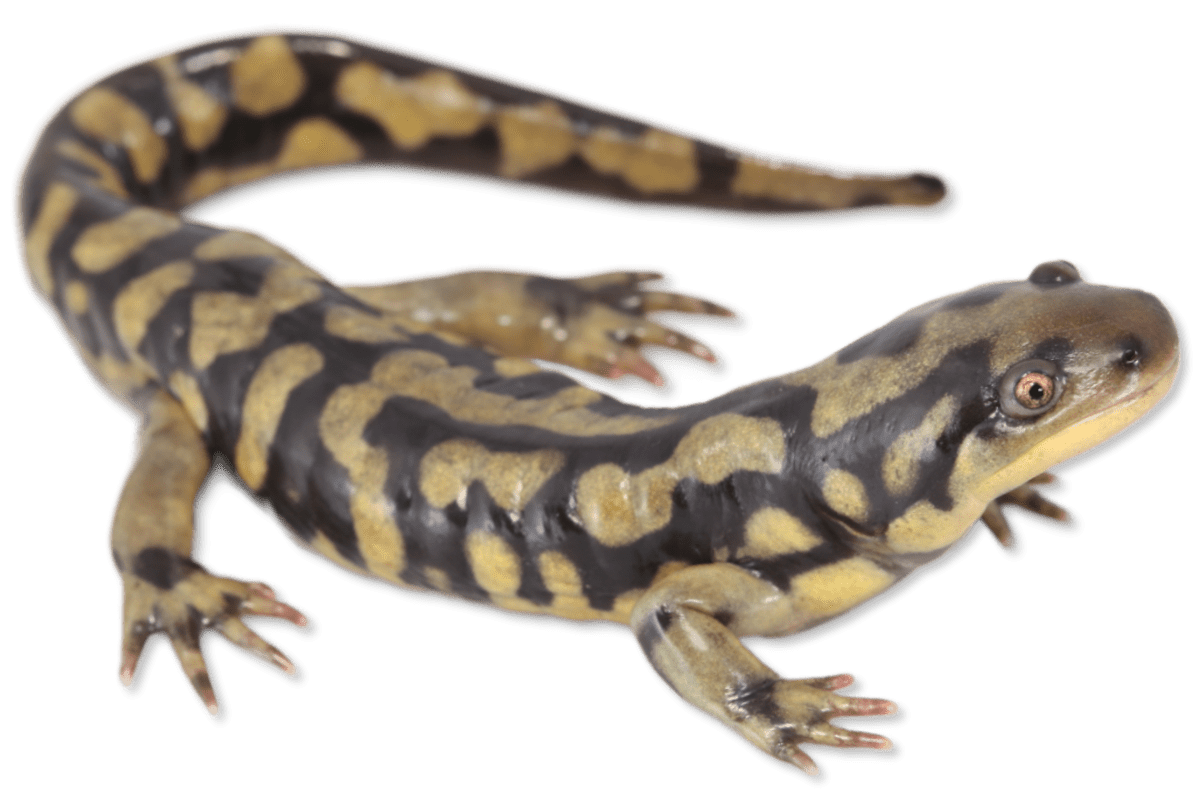Arkansas Herpetological Atlas 2019
This species is represented by 173 records from 14 sources: 160 museum ( ), 2 literature (
), 2 literature ( ), 0 research (
), 0 research ( ), and 9 observation (
), and 9 observation ( ), with 2 additional Trauth et al. (2004) locality points remaining unsourced (
), with 2 additional Trauth et al. (2004) locality points remaining unsourced ( ). It has been museum vouchered for 10 of 75 counties (
). It has been museum vouchered for 10 of 75 counties ( ), with 2 additional counties having other forms of reported occurrence (
), with 2 additional counties having other forms of reported occurrence ( ). Years of collection range from 1900 to present.
). Years of collection range from 1900 to present.
This species occurs primarily in the Springfield Plateau of northcentral Arkansas. A single extant locality is known in northwest Arkansas, with a neighboring locality about 9.6 km away having succumbed to urbanization within the last 10 years (K. G. Roberts, pers. obs.). Extensive surveys in this corner of the state have failed to discover new populations or confirm older historical localities (K G. Roberts, pers. obs.; B. Becker and J. D. Willson, pers. comm.). A historical record from Harrison, Boone County, and a questionable literature/observation record from near Mount Sherman, Newton County (Welbourn and Lindsley, 1979), suggest this species may have occurred more broadly across northern Arkansas at one time. A small number of records traced to the Ozark Biological Laboratory, Imboden, Lawrence County, are likely in reference to the institution source rather than collection site. Evidence of occurrence in the southwest corner of the state comes from a single historical record at Lewisville, Lafayette County, with additional credence from records from neighboring counties in Oklahoma (Sievert and Taggart, 2020) and Texas (Dixon, 2013).













































































